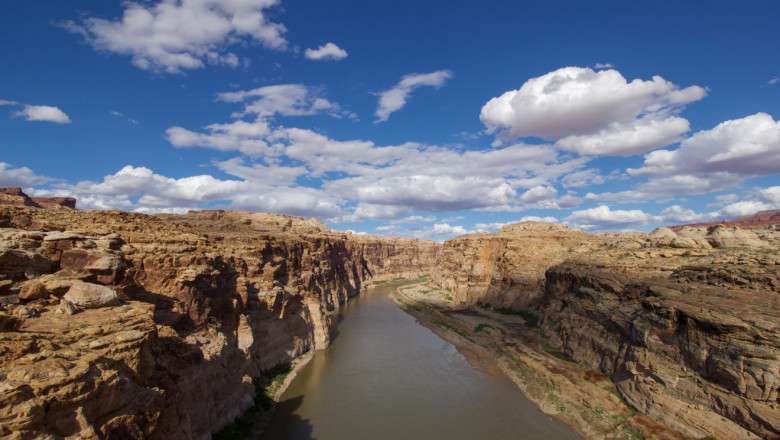
(Leslie Cross/Unsplash License)

(Leslie Cross/Unsplash License)
There is one statistic that lingers in the mind of an aspiring food policy advocate. The US Geological Survey reported in 2018 that agriculture accounted for a majority of water consumption in the Colorado River Basin (CRB) region, excluding water moving out of the basin and hydroelectric energy use, averaging 85% from 1985 to 2010.
Roughly 68% of the nation’s acres for fruits and vegetables are in California. Meanwhile, a 2020 report by Nature found that over half of water use in the CRB relies on crops designated for cattle-feed. Be it produce or livestock, water consumption in agriculture poses an existential threat in a region suffering from a decades-long drought. In this historic moment of crisis, there is yet to be a clear and coordinated mitigation plan from impacted states – Arizona, California, Colorado, New Mexico, Nevada, Utah, and Wyoming.
To better understand the lasting impact of public policy, look no further than the Colorado River Compact. As part of the Law of the River, the Compact was established in 1922 to enforce surface water use without consideration for depletion of groundwater reserves in dryer climates of the present day. Traditional agriculture methods alongside federally enforced water cuts significantly contribute to decreased water availability in the region.
As mentioned above, a heavy agricultural presence in the American Southwest pressures groundwater reserves on top of surface water deliveries at unprecedented levels. Then there is the issue of public water consumption by non-farmers. U.S. Census data released last year declares that some of the fastest growing and most populous cities in the country are in CRB states: Arizona, California, and Nevada. These trends are bound to cause all the more water-stress for the Basin.
Anthropogenic climate change will result in a 10% to 30% reduction of public water use in the Colorado River Basin, which will likely lead to demands for stronger accountability of water waste within an agricultural system that devours resources across the Basin.
While it may feel like there is little room to fight for a better future, there are several opportunities for solutions: funding from the Inflation Reduction Act, the Farm Bill, and better cooperation across private and public sectors led by affected communities.
For starters, Section 50231 of the 2022 Inflation Reduction Act apportioned $550 million in funding to protect water security in the Basin by providing “domestic water supplies to communities or households that do not have reliable access” to water. Federal, state and local governments have the chance to apply for this funding until September 30th, 2031. There is no time like the present.
In the perspective of the agricultural industry, federal policy fails to address sustainable water governance, making sustainable food production a near impossible feat. Case in point, the 2018 US Farm Bill has no explicit section dedicated to drought mitigation, which leads to room in Senate and House negotiations over the 2023 Bill for such language.
Technological innovations in the agricultural industry, such as controlled environment agriculture, present powerful tools for farmers to realize a sustainable business model while tracking their water and energy consumption. Policymakers have the opportunity to center drought mitigation as a crucial component of agricultural policy. This can ensure food security, economic stability, and strategic climate action in a coordinated and holistic manner.
The lack of inter-state policy in groundwater management and the overutilization of surface water across most CRB states has led to a need for federal leadership and policy that “[s]upports and embraces the diversity of locally tailored management solutions, particularly of communities facing groundwater depletion” to uplift the agricultural sector through a more generous return on investment.
Even though water scarcity and food insecurity are scary, and sometimes nebulous, topics 2023 offers a new chance to defy the status quo with available funding, potential partnerships, and a fresh perspective.
This story was featured in our series, Slipping through our fingers: The future of water.